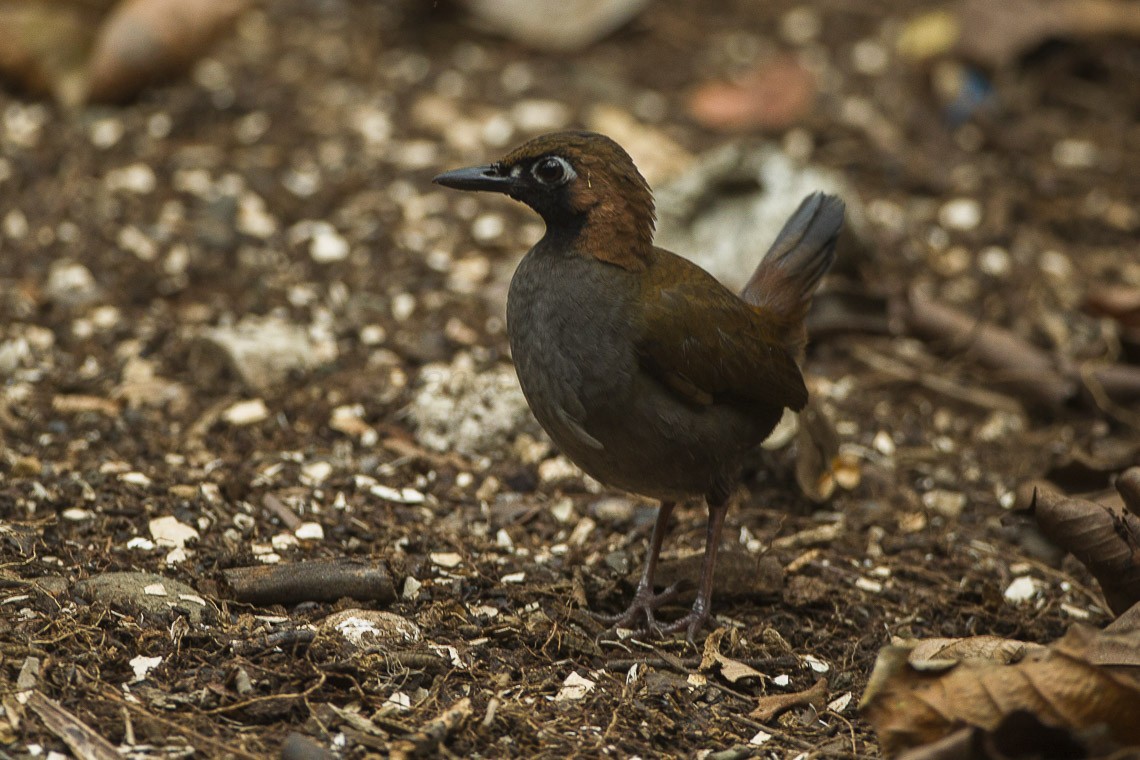Black-faced Antthrush
A species of Formicarius Antthrushes Scientific name : Formicarius analis Genus : Formicarius Antthrushes
Black-faced Antthrush, A species of Formicarius Antthrushes
Botanical name: Formicarius analis
Genus: Formicarius Antthrushes
Content
Description General Info
 Photo By Francesco Veronesi , used under CC-BY-SA-2.0 /Cropped and compressed from original
Photo By Francesco Veronesi , used under CC-BY-SA-2.0 /Cropped and compressed from original Description
The black-faced antthrush is similar in general appearance to a rail, with a dumpy body, horizontal carriage, stout bill and short cocked tail. It walks rather than hops, with a jerky motion again reminiscent of a rail. It is typically 18–19 cm (7.1–7.5 in) long, and weighs 59 g (2.1 oz). The upper parts are rufous brown, and the underparts are paler brown, except for the black face and throat, and rufous under the tail and behind the eye. The sexes are alike in plumage. 
Size
17 cm
Nest Placement
Ground
Feeding Habits
Black-faced Antthrush primarily feasts on ants, complemented by a variety of arthropods including grasshoppers, crickets, and beetles. This species forages on the forest floor, flipping leaf litter to expose prey and revealing its unique dietary niche.
Habitat
Black-faced Antthrush are typically found in varied forest environments, their habitat ranging from primary forest to mature secondary forests. These birds prefer shaded areas with ample ground cover, often residing along river edges and in transitional forests. Although less common in terra firme forests, they are observed to inhabit floodplains and second growth forests. In certain areas, they are also found in bamboo forests. Their geographic distribution encompasses broad neotropical regions where these forest conditions prevail.
Dite type
Insectivorous
General Info
Feeding Habits
Bird food type
Behavior
The antthrush builds a leaf-lined nest in a cavity in a hollow branch or stump in which two white eggs are laid. It is an insectivore which feeds on ants and other insects. It is quite terrestrial, feeding mainly on the ground. It will follow columns of army ants. The call is a loud whistle followed by a series of 2–10 descending whistles, WHU! wu-wu-wu-wu-wu-wu-wu-wu-wu. 
Distribution Area
It is a common and widespread forest bird in the tropical New World, from Honduras through Central America to the northern regions of South America. It occurs in Colombia, Venezuela, Trinidad and Brazil, and the Amazon Basin with the exception of the northwest region. 
Species Status
Not globally threatened.
Scientific Classification
Phylum
Chordates Class
Birds Order
Perching birds Family
Antthrushes and antpittas Genus
Formicarius Antthrushes Species
Black-faced Antthrush